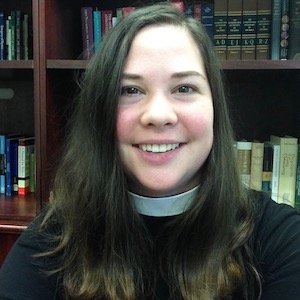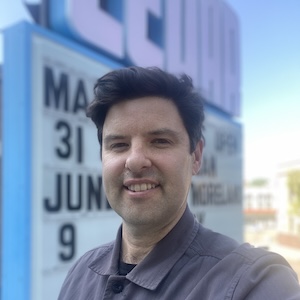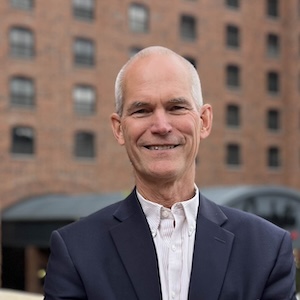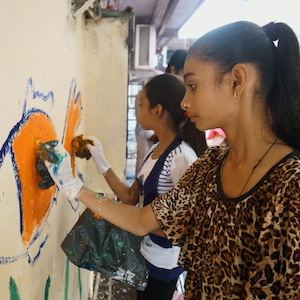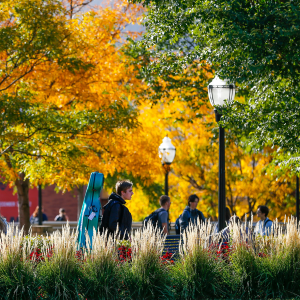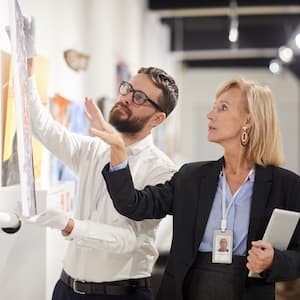Sarah Miller
Art and religion have long been intertwined. They are both powerful tools to communicate ideas, unite people, and express beliefs. The study of this intersection is at the core of what motivates Arts and Cultural Leadership student Sarah Miller.
Miller, an ordained Episcopal priest, came to Minnesota from Nebraska to pursue a degree that would allow her to explore how, like faith, the arts can build and create community.
In the midst of the COVID-19 pandemic, with artistic and faith communities taking their work online, this exploration has become unusually challenging. “I think, with almost every aspect of my life now happening virtually,” Miller says, “it is definitely helping me recognize what is irreplaceable about being face-to-face with people.”
“Don’t put yourself in a box.”
It all started with a book. Curious about the links between faith and the arts, Miller bought The Creative Community Builder’s Handbook, written by ACL Director of Graduate Studies Tom Borrup. It introduced her to an area of study she was curious about but unfamiliar with.
The former English major had never worked professionally in the arts arena. She wasn’t sure she had the right knowledge or set of experiences to excel in the ACL program, but she soon saw the benefits of having diverse backgrounds in the classroom, including her own.
“Don’t put yourself in a box even if you don’t think your experience has a direct connection with the arts,” she says. “The ability to work across sectors and think in multiple ways is a real advantage.”
Parallels
Miller knew she had chosen the right degree during the course Trends and Impacts in the Arts with Deanna and Roger Cummings. She realized, while watching a video about how arts organizations were navigating cultural shifts, that the church was facing the same issues.
"The ability to work across sectors and think in multiple ways is a real advantage.”
“I was jumping up and down because the changes (the video) was describing and the responses were almost verbatim what the Episcopal Church and other US churches have been facing. I could see how similar the challenges were, like aging congregations, bringing in younger generations, feeling disconnected. It opened up a whole new set of questions for me.”
She believes churches and arts organizations can teach each other. “It confirmed for me that spirituality/faith and the arts are a natural fit. They can mutually enrich each other. It’s exciting to get a clear sense of how they fit together in this particular moment.”
Building Bridges
While she couldn’t have predicted the twists and turns the semester took, she says that the transition to online learning has been “pretty seamless.”
Miller’s background has no doubt contributed to her ability to be resilient and flexible. “I’m trying to keep to a routine and keep up with work and school responsibilities, while also making space to grieve and to sit with the suffering that is happening right now.”
She is currently working as Civic Engagement Associate with the Minnesota Asset Building Coalition, a statewide coalition of nonprofits whose mission is to increase economic and racial equity through creating asset-building opportunities for low-income Minnesotans and reducing systemic barriers to economic mobility.
Her role there focuses on organizing coalition members to engage in advocacy on issues that make a difference for their clients and communities. The work involves fostering relationships across programs and sectors, to “figure out how to bridge gaps in creative ways.”
Looking ahead, Miller believes that the arts can truly build bridges. “The arts are a way of allowing people from all backgrounds and beliefs and cultures to connect and communicate with each other and co-create.”
Pro Tip for Students
“The more you have a sense of what you want to get out of the program, the kind of work you want to do afterwards, the more you can really start to use your coursework as a way to clarify and prepare for that.”

